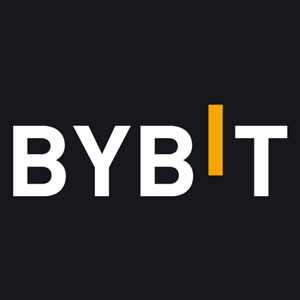Arbitrage in 2025: Profiting Across DEXs, CEXs, and Cross-Chain Bridges December, 2025
This guide explores how traders can profit from price discrepancies across decentralized exchanges, centralized exchanges, and cross-chain bridges in 2025. It covers strategies, tools, and risk management techniques for executing trades efficiently and securely.
 Written by Nikolas Sargeant
Written by Nikolas Sargeant
| Комиссии биржи | Методы внесения депозита | |||||||||
|---|---|---|---|---|---|---|---|---|---|---|
| Названия | Поддерживаемые криптовалюты | Комиссия тейкера | Комиссия мейкера | Комиссии за вывод средств | Банковский перевод | Кредитная карта | Trading API | АКТИВНЫЙ С | Offer | |

Bybit
Contract Trading Exchanges
|
188 | 0.06% | 0.01% | 0.0005 | 2018 |
GET UP TO USD 600 IN REWARDS!
|
Посетить | |||

PrimeXBT
Contract Trading Exchanges
|
34 | 0.01% | 0.02% | 0.0005 | 2018 |
GET 35% DEPOSIT BONUS
|
Посетить | |||

Binance
Centralized Exchanges
|
433 | 0.10% | 0.10% | 0.0002 | 2017 |
GET UP TO USD 100 WELCOME BONUS
|
Посетить | |||

Kraken
Centralized Exchanges
|
125 | 0.26% | 0.16% | 0.0002 | 2011 |
GET USD 200 IN FEE CREDITS!
|
Посетить | |||

KuCoin
Centralized Exchanges
|
637 | 0.10% | 0.10% | 0.0005 | 2017 |
GET UP TO 500 USDT IN SIGN-UP BONUS
|
Посетить | |||

Coinbase
Centralized Exchanges
|
136 | 2.00% | 2.00% | 0.000079 | 2012 |
GET USD 5 SIGN-UP BONUS!
|
Посетить | |||

Swapzone
Decentralized Exchanges
|
381 | 0.00% | 0.00% | 0.000079 | 2019 |
|
||||

1inch.Exchange
Decentralized Exchanges
|
267 | 0.0006 | 2019 |
|
||||||

PancakeSwap
Decentralized Exchanges
|
203 | 0.20% | 0.20% | 0.00041 | 2020 |
|
||||

Uniswap
Decentralized Exchanges
|
390 | 0.30% | 0.30% | 0.000079 | 2018 |
|
||||
Crypto arbitrage is the practice of capturing price differences for the same asset across venues, decentralized exchanges (DEXs), centralized exchanges (CEXs), and even across blockchains via bridges. Despite thinner spreads than the wild west days, 2025 still offers opportunities because liquidity is fragmented across chains (ETH, Solana, Polygon, BSC, etc.), venues settle at different speeds, and fees/latency aren’t uniform. When prices drift out of sync, sometimes for seconds, you can buy where it’s cheaper and sell where it’s higher.
This guide shows you how to do that methodically: which venues to watch, how to factor in gas/withdrawal/bridge fees, what tools to use (from simple price screens to execution bots), and how to mitigate risks like slippage, failed transactions, smart-contract exploits, or frozen withdrawals. We’ll also cover cross-chain plays (bridge → trade → bridge back), as well as DEX↔CEX moves and multi-leg/triangular routes.
Throughout, we’ll anchor examples to exchanges you’ll actually encounter on comparison sites, so the tactics translate to real order books and pools, not theory. For instance, we’ll reference DEXs like Uniswap and QuickSwap, and CEXs like Binance, Bybit, and Coinbase.

Overview of Platforms
To trade profitably in 2025, you first need to understand the venues where arbitrage opportunities arise. These fall into three main categories: Decentralized Exchanges (DEXs), Centralized Exchanges (CEXs), and Cross-Chain Bridges.
Decentralized Exchanges (DEXs)
DEXs are peer-to-peer marketplaces built on smart contracts. They allow users to swap tokens directly from their wallets, without surrendering custody to a third party. Liquidity is supplied by users in liquidity pools, and prices are determined by automated market makers (AMMs) like Uniswap’s constant-product formula.
Advantages:
- No account registration or KYC requirements
- Direct wallet-to-wallet swaps
- Access to tokens not listed on major CEXs
Drawbacks:
- Higher risk of slippage due to fragmented liquidity
- Smart contract vulnerabilities
- Gas fees (especially on Ethereum) can erase small arbitrage margins
Examples:
- Uniswap (Ethereum, Arbitrum, Optimism)
- PancakeSwap (BNB Smart Chain)
- 1inch.Exchange (multi-chain aggregator)
- QuickSwap (Polygon)
- B. Centralized Exchanges (CEXs)
Centralized Exchanges (CEXs)
CEXs are run by companies that match buyers and sellers through internal order books. They hold user funds in custodial wallets and usually require KYC verification.
Advantages:
- Deep liquidity and tight spreads
- Multiple trading pairs (including fiat)
- Lower slippage for large orders
Drawbacks:
- Regulatory exposure — accounts can be frozen
- Withdrawal delays or limits
- Custodial risk (exchange hacks, insolvency)
Examples:
- Binance – largest by volume, wide asset coverage
- Coinbase – regulated U.S. exchange with strong security
- Bybit – popular for derivatives and spot trading
- Kraken – long-standing exchange with robust fiat support

Cross-Chain Bridges
While not “exchanges” in the traditional sense, bridges allow tokens to be moved between blockchains, enabling arbitrage across ecosystems. For example, moving USDT from Ethereum to BNB Smart Chain to exploit a price gap on PancakeSwap.
Advantages:
- Access to multiple DeFi ecosystems
- Enable cross-chain arbitrage loops
Drawbacks:
- Bridge fees and delays
- Security risks; some high-profile bridge hacks have resulted in losses over $100M
- Liquidity limits on smaller chains
Examples: Multichain, Wormhole, Stargate
Understanding Cross-Chain Bridges
In 2025, cross-chain bridges have become an essential part of the crypto arbitrage toolkit. They are protocols that allow you to move assets between different blockchains without going through a centralized exchange. For example, you could move USDC from Ethereum to Polygon, or from BNB Smart Chain to Avalanche, in minutes.

How They Work
Most bridges operate by locking your asset on the source chain and minting a wrapped version on the destination chain. When you send assets back, the wrapped tokens are burned and your original coins are unlocked. Some bridges use liquidity pools on both ends instead of mint/burn, speeding up transfers.
Why They Matter for Arbitrage
Arbitrage thrives on price discrepancies — and prices aren’t always aligned across chains. A token might be trading at $1.02 on a DEX on Ethereum, but at $0.99 on a Polygon DEX. With a bridge, you can move capital to where the price is favorable, execute the trade, and bring the profit back.
Bridges also open up multi-chain loops, such as:
- Swap on Ethereum’s Uniswap
- Bridge to BNB Smart Chain
- Swap on PancakeSwap
- Bridge back to Ethereum
Risks and Costs
- Fees: Bridges often charge a percentage or flat fee, and you’ll still pay gas on both chains.
- Time: Some transfers take minutes, others hours — which can kill fast arbitrage opportunities.
- Security: Several major bridge hacks in recent years (e.g., Wormhole, Ronin) show the need for caution.
- Liquidity limits: Smaller or newer bridges may not have enough liquidity to handle large transfers without delays.
Examples to Know
- Multichain (formerly Anyswap) – multi-chain support, widely used in DeFi
- Wormhole – connects Solana, Ethereum, BNB Chain, and others
- Stargate – focuses on fast, low-slippage stablecoin transfers
Arbitrage Strategies in 2025
Arbitrage has evolved alongside crypto markets. Spreads have tightened compared to the early days, but with dozens of active CEXs, hundreds of DEXs, and an expanding web of bridges, price misalignments still pop up every day. Here are the main ways traders exploit them in 2025.

DEX ↔ CEX Arbitrage
Concept: Buy low on one type of venue, sell high on the other.
Example flow:
- Spot token XYZ at $1.02 on Binance (CEX) but $0.99 on Uniswap (DEX).
- Buy on Uniswap using USDC from your wallet.
- Withdraw or bridge XYZ to Binance.
- Sell immediately for USDT.
Key considerations:
- Fees: CEX withdrawal fees + network gas costs can eat profits.
- Speed: Withdrawal times vary — Bybit might be near-instant for certain assets, Coinbase can take minutes to hours.
- Slippage: Thin liquidity on a DEX can move the price against you.
Tools: Use aggregators like 1inch.Exchange for best DEX rates; monitor Binance, Bybit, Kraken, and Coinbase order books via APIs.
Cross-Chain Arbitrage
Concept: Use bridges to capture price differences across blockchains.
Example:
- Token ABC trades at $50 on PancakeSwap (BNB Smart Chain) and $52 on QuickSwap (Polygon).
- Bridge ABC or a stablecoin from BNB Chain to Polygon.
- Sell on QuickSwap, then bridge back.
Challenges:
- Bridge fees and transfer times may wipe out margins.
- Price can move before funds arrive.
- Some tokens may not have deep liquidity on both chains.
Triangular / Multi-Platform Arbitrage
Concept: Exploit relative mispricings between three assets on the same or different venues.
Example (same DEX):
- Trade USDT → ETH.
- ETH → BTC.
- BTC → USDT.
If each leg has a tiny gain, the cycle yields a profit.
Cross-platform variation: One leg on Uniswap, one on Binance, one on Bybit.
Risks: Execution speed is critical; even a slight delay can turn a profit into a loss.

Flash Loan Arbitrage
Concept: Borrow large sums instantly with no collateral, execute a profitable trade, repay in the same transaction.
Typical use case:
- Borrow stablecoins from an Aave flash loan.
- Use them to arbitrage between two DEX pools.
- Repay loan plus small fee, keep the difference.
Pros: Leverage without upfront capital.
Cons: Only available on chains with smart-contract-based lending (Ethereum, BSC, Polygon). Transaction must succeed in one block; otherwise, it fails and you pay gas.
Best Practices Across All Strategies
- Automation: Manual execution is too slow for most profitable spreads; use bots.
- Fee accounting: Track every cost (gas, withdrawal, bridge, trading) before committing.
- Liquidity checks: Avoid venues with shallow books or pools.
- Regulatory awareness: Some CEXs block withdrawals to certain jurisdictions.
Practical Setup & Tools
Even the sharpest arbitrage strategy is worthless without the right setup. In crypto, milliseconds matter, and having accurate, fast, and reliable systems can make the difference between a win and a loss.
Real-Time Price Feeds
Opportunities vanish quickly, so you need prices from multiple venues in real time.
- Market Aggregators: CoinGecko, CoinMarketCap for high-level snapshots.
- DEX APIs: Pull liquidity pool and swap data directly from protocols like Uniswap, PancakeSwap, QuickSwap, or SushiSwap.
- CEX APIs: Binance, Bybit, Kraken, Coinbase, and KuCoin all offer REST/WebSocket APIs for real-time order books and trades.

Arbitrage Bots & Execution Frameworks
Manually executing trades is too slow for most profitable spreads — automation is key.
- Hummingbot – open-source framework for DEX and CEX trading.
- Custom Scripts – Python or Node.js bots tailored to your exact strategy.
- Freqtrade – better for algorithmic and market-making styles.
Run bots on low-latency VPS or cloud servers physically close to your target exchange’s servers to reduce execution delay.
Cross-Chain Bridges
For cross-chain arbitrage, choose bridges that balance speed, security, and liquidity.
- Multichain – supports a wide range of networks.
- Wormhole – good for Solana, Ethereum, and BNB Smart Chain.
- Stargate – low-slippage stablecoin transfers.
Automating bridges often requires smart contract integration; some still need manual wallet confirmation.
Wallet Infrastructure
Multi-chain wallet management is crucial for DEX activity.
- MetaMask – supports multiple EVM networks.
- Rabby Wallet – intuitive multi-chain features.
- Hardware wallets – Ledger or Trezor for securing profits and long-term storage.
Fee Tracking & Analytics
Arbitrage profits can disappear if you underestimate costs. Track everything.
- Gas Trackers: Etherscan Gas Tracker, BSC Gas Station, Polygon Gas Station.
- Analytics Dashboards: Dune Analytics, Flipside Crypto for monitoring trade data.
- Custom Logs: Spreadsheets or database logs to track execution, costs, and net P&L.
Security & Risk Controls
- Use 2FA and withdrawal whitelists on all CEX accounts.
- Never leave all funds in one wallet or platform.
- Check smart contract audits for any DEX or bridge you use.
- Test new strategies with small amounts before scaling.
With this setup in place, you’ll have the data, automation, and security to execute trades efficiently and confidently.

Risks & Challenges
Arbitrage in crypto might sound like “free money,” but in practice it’s a race against time, costs, and risk. In 2025, the complexity of multi-chain, multi-platform trading means you need to be hyper-aware of what can go wrong.
Smart Contract Risk
DEXs and bridges rely on smart contracts. Bugs, exploits, or malicious code can drain liquidity pools or freeze assets without warning. Even protocols with audits have been compromised, so never treat code as 100% safe.
Liquidity Risk
Some opportunities exist precisely because the liquidity is thin. When you place your order, the price may move against you (slippage), cutting into or even wiping out your profit. Large trades in small pools are especially vulnerable.
Transaction Costs & Timing
Gas fees, withdrawal charges, and bridge fees can erase margins if not calculated upfront. On volatile days, Ethereum gas spikes can make a profitable trade instantly unviable. Delays, from congested networks or slow CEX withdrawals, can cause the price to shift before you complete the cycle.
Price Movement Risk
Arbitrage depends on a short-lived price gap. If the market moves mid-transaction, you may end up with the asset at a worse price than expected, or even incur a loss. This is especially true for multi-leg or cross-chain trades where each step takes time.
Regulatory & Compliance Risk
Some exchanges enforce strict KYC and regional restrictions. If your account is flagged mid-trade, withdrawals could be delayed or blocked, locking up your capital. Regulations in 2025 are tightening in multiple jurisdictions, so keeping compliant is critical.
Security Threats
CEXs can be hacked, wallets can be drained via phishing, and private keys can be stolen. Security hygiene — cold storage, hardware wallets, 2FA, and careful key management — is non-negotiable.

Bot & MEV Competition
You’re not the only one running scripts to capture spreads. Bots with faster connections or better positioning in the blockchain’s transaction pool (via Miner Extractable Value strategies) can “front-run” you, taking the profit before your transaction confirms.
Bottom line: Arbitrage is viable, but only if you account for every risk in your execution plan and never trade with more than you can afford to lose.
Case Study Example
To make the concepts tangible, let’s walk through a realistic 2025 arbitrage trade using a DEX↔CEX price gap.
Scenario
- Asset: Token XYZ
- DEX: Uniswap (Ethereum) price — $0.98
- CEX: Binance price — $1.01
- Capital Available: $10,000 USDC
- Ethereum Gas Fee: $8 per transaction
- Binance Withdrawal Fee: 0.1 XYZ
Step-by-Step
- Opportunity Detection - A monitoring bot spots that XYZ is $0.03 cheaper on Uniswap than on Binance. The spread is 3%, enough to cover fees and leave a margin.
- DEX Purchase - Swap $10,000 USDC for XYZ on Uniswap at $0.98 each → you receive 10,204 XYZ. Gas cost: $8.
- Transfer to CEX - Send XYZ from your wallet to Binance. Ethereum network fee: $8. Binance receives 10,203.9 XYZ after withdrawal fee.
- CEX Sale - Sell 10,203.9 XYZ at $1.01 each → $10,305.93 USDT.
Profit Calculation
- Revenue: $10,305.93
- Costs:
-
Gas (buy): $8
-
Gas (transfer): $8
-
Spread capture: already net of CEX fee since Binance uses maker/taker fees (e.g., 0.1%)
-
- Net Profit: ≈ $289.93
Key Takeaways
- Even small spreads can yield meaningful profits if you move quickly and size your trades well.
- Low-latency execution (via bots) is essential to secure the price before it changes.
- Fee accounting at the planning stage ensures you don’t enter a losing trade.
- The same flow works in reverse (CEX → DEX) if the price gap flips.

Best Practices in 2025
The difference between profitable arbitrage traders and those who burn capital often comes down to discipline and preparation. In 2025, markets are more competitive than ever, so following a consistent set of rules is key.
1. Monitor Constantly
Opportunities appear and vanish in seconds. Use automated alerts and bots to track price gaps 24/7.
2. Account for Every Fee
Before committing, calculate gas costs, withdrawal charges, and trading fees. If your profit margin doesn’t survive these, skip the trade.
3. Prioritize Speed
Latency kills arbitrage. Host your bots on servers close to exchange infrastructure and streamline transaction signing.
4. Diversify Venues
Don’t rely on a single exchange or bridge. Multiple options mean you can pivot quickly when one platform has delays or downtime.
5. Secure Your Capital
Enable 2FA, use hardware wallets for profits, and split capital across platforms to limit exposure.
6. Start Small, Scale Gradually
Test new strategies with minimal funds until you’re confident they work consistently.
7. Stay Compliant
Keep up with evolving crypto regulations in your region to avoid frozen accounts or blocked withdrawals.
Conclusion & Future Outlook
Arbitrage remains one of the few crypto strategies where you can lock in profit without relying on price predictions, but in 2025, it demands speed, precision, and risk awareness. The days of easy, double-digit spreads are mostly gone, replaced by fleeting opportunities that last seconds and require tight execution.
As decentralized and centralized markets continue to merge, and as cross-chain infrastructure improves, arbitrage is evolving. Bridges are becoming faster and cheaper, layer-2 networks are reducing gas costs, and automated execution tools are becoming more accessible. These developments create fresh opportunities for traders who can adapt quickly.
Looking forward, expect competition to intensify. Professional trading firms, MEV-optimized bots, and high-frequency traders are already active in this space. The edge will belong to those who combine technical skill with operational discipline: monitoring multiple venues, automating execution, safeguarding funds, and staying informed on regulatory shifts.
Ultimately, arbitrage in 2025 is about playing the margins smartly. Small, consistent wins — repeated over time, compound into substantial returns. Approach each trade like a calculated business decision, not a gamble, and you’ll be better positioned to thrive in this fast-moving market.
Comments
Log in to post a comment
No comments yet
Be the first to share your thoughts!
| Комиссии биржи | Методы внесения депозита | |||||||||
|---|---|---|---|---|---|---|---|---|---|---|
| Названия | Поддерживаемые криптовалюты | Комиссия тейкера | Комиссия мейкера | Комиссии за вывод средств | Банковский перевод | Кредитная карта | Trading API | АКТИВНЫЙ С | Offer | |

Bybit
Contract Trading Exchanges
|
188 | 0.06% | 0.01% | 0.0005 | 2018 |
GET UP TO USD 600 IN REWARDS!
|
Посетить | |||

PrimeXBT
Contract Trading Exchanges
|
34 | 0.01% | 0.02% | 0.0005 | 2018 |
GET 35% DEPOSIT BONUS
|
Посетить | |||

Binance
Centralized Exchanges
|
433 | 0.10% | 0.10% | 0.0002 | 2017 |
GET UP TO USD 100 WELCOME BONUS
|
Посетить | |||

Kraken
Centralized Exchanges
|
125 | 0.26% | 0.16% | 0.0002 | 2011 |
GET USD 200 IN FEE CREDITS!
|
Посетить | |||

KuCoin
Centralized Exchanges
|
637 | 0.10% | 0.10% | 0.0005 | 2017 |
GET UP TO 500 USDT IN SIGN-UP BONUS
|
Посетить | |||

Coinbase
Centralized Exchanges
|
136 | 2.00% | 2.00% | 0.000079 | 2012 |
GET USD 5 SIGN-UP BONUS!
|
Посетить | |||

Swapzone
Decentralized Exchanges
|
381 | 0.00% | 0.00% | 0.000079 | 2019 |
|
||||

1inch.Exchange
Decentralized Exchanges
|
267 | 0.0006 | 2019 |
|
||||||

PancakeSwap
Decentralized Exchanges
|
203 | 0.20% | 0.20% | 0.00041 | 2020 |
|
||||

Uniswap
Decentralized Exchanges
|
390 | 0.30% | 0.30% | 0.000079 | 2018 |
|
||||
